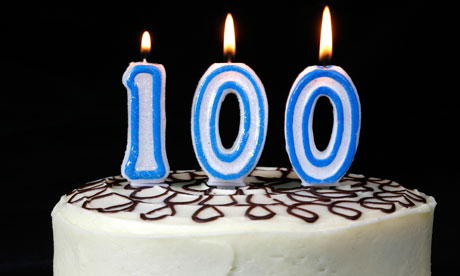We're all living longer. But how many of us will live to 100?
The Department for Work and Pensions have released a report detailing life expectancy in 2011 and comparing the generations at 20, 50 and 80 years old. The data sees 20-year-olds three times more likely to reach 100 than their grandparents, and twice as likely as their parents.
While a girl born in 2011 has a one-in-three chance of living to their 100th birthday, a boy has a one-in-four chance. However, compared to a baby born in 1931, the children of 2011 are almost eight times more likely to become centenarians.
The predictions by the Office for National Statistics estimate the likelihood of reaching 100 by looking either at your age now or the year of your birth. They show that by 2066, there will be more than half a million people in the UK aged 100 or over.
The phenomenon of Britain's ageing population will impact on everything from pensions to the national health service. Pensions Minister Steve Webb says:
the dramatic speed at which life expectancy is changing means that we need to radically rethink our perceptions about our later lives … We simply can't look to our grandparents' experience of retirement as a model for our own. We will live longer and we will have to save more
So, what does it mean? Key figures from the data, show:
• The average chance of a 20-year-old to reach 100 is 23%; however women aged 20 have a 26.6% chance - heavily contrasting with the male 19.5%
• Those aged 50 in 2011 have a 14.2% chance of seeing the year 2061 (17% of women, 11.4% of men)
• A further ten years reduces your chances by 2.2%, and by the time they reach 70 the average Briton will be at 10.4%
• Those aged 83-84 now have lowest likelihood of reaching 100 of any age group - 7.2%. Beyond this percentages begin to look up, with a 99-year-old having a 67.% chance of making it through to their 100th birthday
We've extracted the data from the DWP for you to play with. What can you do with it?
Data summary
Download the data
• DATA: download the full spreadsheet
More open data
Data journalism and data visualisations from the Guardian
World government data
• Search the world's government data with our gateway
Development and aid data
• Search the world's global development data with our gateway
Can you do something with this data?
• Flickr Please post your visualisations and mash-ups on our Flickr group
• Contact us at data@guardian.co.uk
• Get the A-Z of data
• More at the Datastore directory
• Follow us on Twitter
• Like us on Facebook

